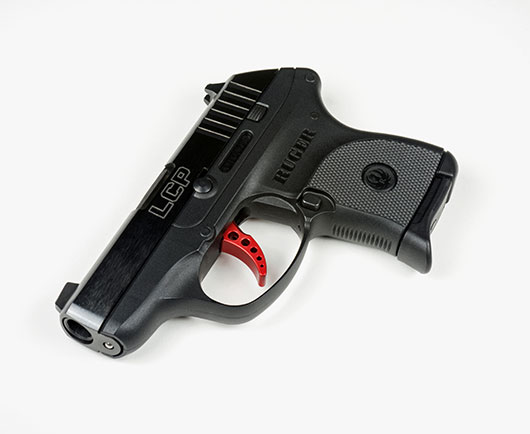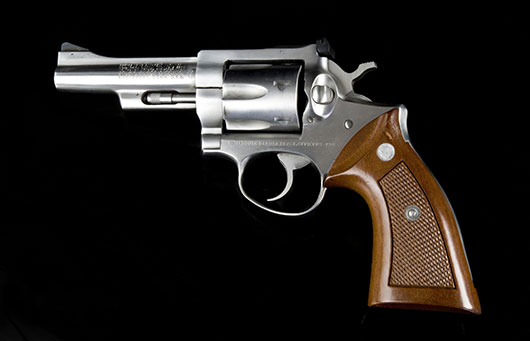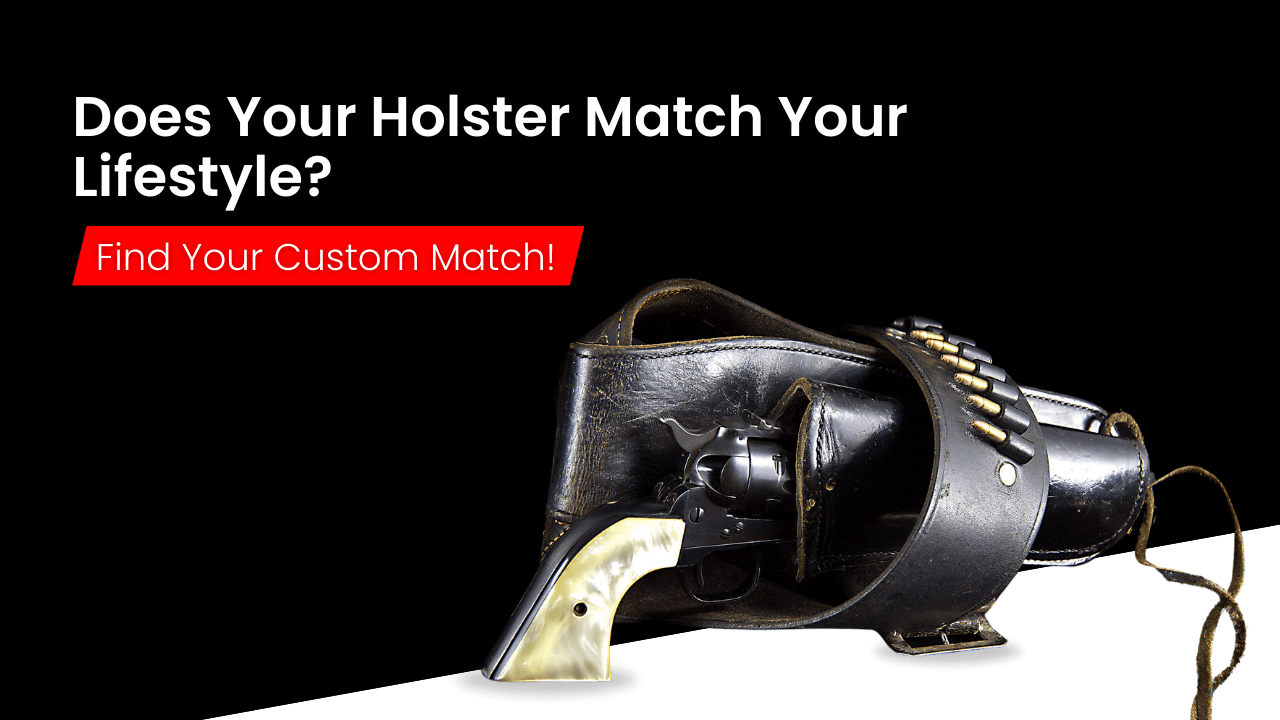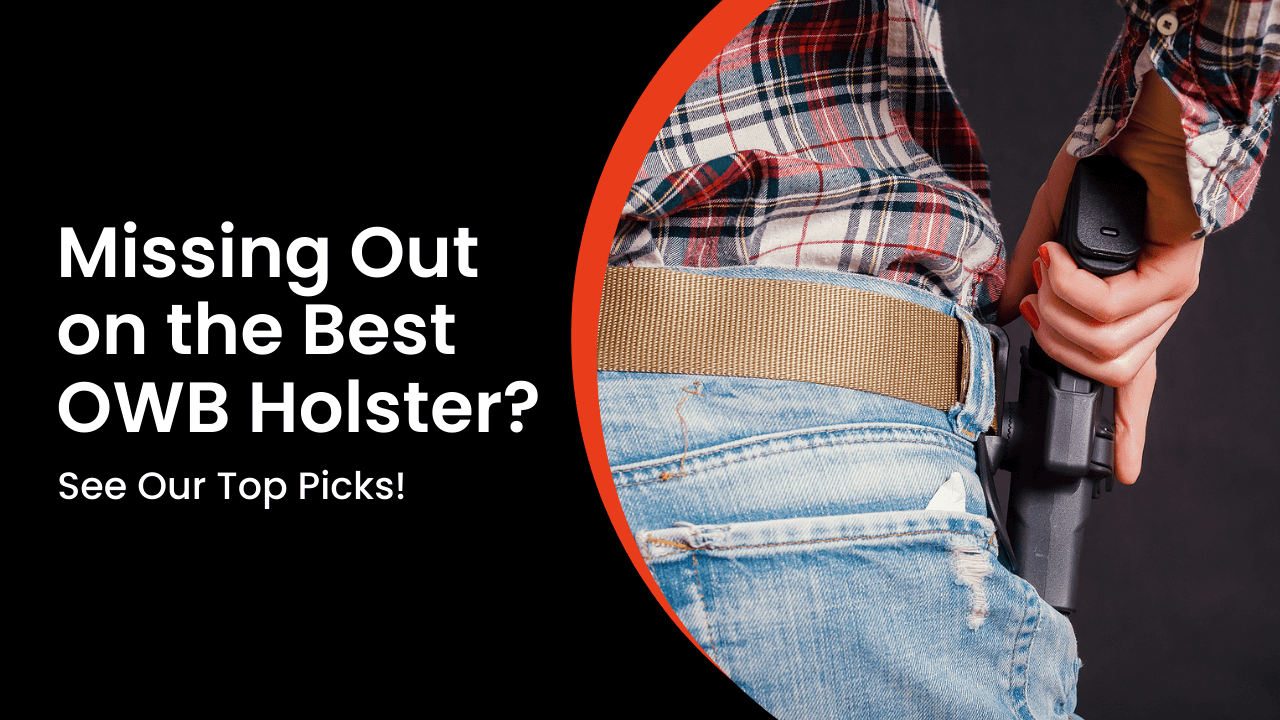What to Know About Ruger IWB Holster and How to Choose
May 12th 2022

Sturm, Ruger & Co. is a household name in American firearms. Headquartered in Southport, Connecticut, the firm was founded in 1949 by William B. Ruger and his partner and financier Alexander McCormick Sturm. The Standard Model’s first product was a .22-caliber rimfire semi-automatic pistol that evolved into a diverse product line.
Today, the company manufactures various centerfire and rimfire firearms, including semi-automatic pistols and revolvers suitable for concealed carry. If you’re interested in carrying a Ruger handgun for self-defense, it’s worth understanding the elements that comprise a concealed-carry holster and how to choose one.
Ruger CCW Firearms
Before selecting a suitable concealed-carry holster, you should evaluate your requirements for a defensive firearm.
If you need to carry a compact or subcompact handgun concealed, Ruger offers several weapons to fulfill this role. For example, the .380 ACP Ruger LCP is a highly compact polymer-framed pistol weighing 9.6 oz. Its successor, the LCP II, is an equally light firearm at 11.2 oz.
The LC380 is heavier, at 17.2 oz., reducing recoil and increasing control. The LCP MAX packs 11 rounds of .380 ammunition (10+1) in a 10.6-oz. pistol.
The EC9s is a pocket-size companion chambered in 9mm, weighing the same as the LC380. The aptly named MAX-9, also chambered in 9mm, increases the magazine capacity from 10+1 to 12+1 rounds for added firepower.
IWB Holsters
Inside the waistband holsters (IWB) are ideal for carrying compact and pocket-size Ruger firearms. To wear an IWB holster, you place it between your waistband and body, attaching it to your gun belt using one or two fasteners (belt clips).
IWB holsters are easier to conceal and are less restrictive to your wardrobe than alternative holster types. For example, if you want to conceal an OWB holster, you'll need to wear a jacket or an equivalent cover garment. However, this may not always be a viable option depending on the current weather and conditions.
Since IWB gun holsters are more versatile, you can also tuck your shirt over the holster and behind the belt clips (making it a tuckable holster). Belt clips allow you to adhere to company dress codes without compromising concealment. There must be adequate space between the belt clip and the holster shell for a holster to be tuckable.
IWB Holster Requirements
For an IWB holster to be suitable for self-defense, it should meet the following standards:
Security
If your holster is a loose fit or doesn't hold your firearm securely, you won’t have the confidence to forget you're wearing it while carrying. Some gun owners periodically touch their gun holster, either directly or through their clothing, to remind themselves their gun is still there. This can disclose that you're carrying a concealed weapon, so it is a practice you'll want to avoid by having a secure holster.
Furthermore, from a safety perspective, you don’t want your gun to fall out or become lost, especially during periods of vigorous physical activity, such as running or struggling with an assailant. Your holster's first job is to protect and retain your gun.
Concealability
When carrying a concealed firearm, it is critical for your holster to use thin, low-profile materials that do not give away to observers that you’re armed. Quality IWB holsters employ thin, 0.08” Kydex sheets and are molded to fit the shape of your exact firearm, providing maximum concealability and retention and preventing your holster from printing.
Accessibility
If you’re forced to draw your weapon in self-defense, you’ll need it immediately. As a result, you should be able to acquire a full firing grip on the weapon when you attempt to draw it, and there should be no impediments to an efficient draw stroke.
Retention straps, thumb breaks, and locking mechanisms can complicate or delay the draw and require additional practice to master. Instead, a holster that uses passive retention, the friction resulting from thermoformed Kydex construction, is simple and effective.
Comfort
Some gun owners will claim comfort isn't necessary for a holster. However, you are less likely to wear an uncomfortable holster regularly, defeating the purpose of carrying a firearm for self-defense. Find a holster that fits you properly and experiment with different carry positions.
Although your firearm model influences carry comfort, a good holster should let you carry even larger firearms with ease, from the lightest subcompact gun to a full-size pistol.
The most common carry position amongst firearm owners is strong side carry, followed by appendix carry, behind the hip, and cross draw.
Safety
Every concealed carry gun holster should have a fully enclosed trigger guard. It doesn’t matter whether your handgun is single action or double action; protecting your trigger from being pulled inadvertently is vital to prevent accidental and negligent discharges.
When you draw your weapon, it should be physically impossible for your finger to enter the trigger guard until your weapon clears the holster mouth. This feature improves your draw's safety and prevents foreign objects from contacting the trigger during an altercation.
Protection against sweat
Although holster designs may vary, all high-quality everyday carry IWB holsters should feature a sweat guard (also called a sweat shield). Sweat guards are essential to shield your gun from exposure to sweat and body heat, as they can damage your gun’s metal finish and potentially introduce rust and corrosion to its metal elements (slide, dot sights, etc.).
Adjustability
No two shooters are entirely alike. To gain the most from concealed carry, you need to be able to adjust the cant, ride height, and retention of your holster to your personal preferences, clothing choices, and carry position.
Adjustable retention lets you choose how tightly your gun holster grips the sides of your holstered firearm. Choose the fit and retention that provides you with the best balance of draw speed and retention safety. An ideal retention level should be able to retain your gun even if your holster is upside down while still letting you perform a quick and smooth draw.
Durability and Rigidity
A quality Kydex holster should withstand rough handling and use without experiencing excessive wear. The holster mouth should be rigid and resist collapse. The concealed holster should remain open for one-handed re-holstering when you draw your weapon.
IWB Kydex holsters are designed to maximize concealment while providing long-term durability and a more rigid and water-resistant alternative to leather holsters. Kydex, a thermoplastic developed for the aircraft industry, molds to the exterior surfaces of the firearm, ensuring a high degree of retention.

OWB Holsters
If you’d prefer to carry your Ruger firearm in an outside-the-waistband holster (OWB), your choices are not limited to compact handguns. You can select a heavier, more powerful weapon such as the Ruger SP101, GP100, Redhawk, or a classic, like the Security-Six.
Get the Best Ruger Holsters at Incognito Concealment
Whether you already own a Ruger firearm or are contemplating purchasing one, Incognito Concealment offers a wide range of holsters for various Ruger pistols and revolvers, such as the LCP, LCP II, LCR .38, EC9s, Ruger Security 9, or the Ruger SR-series.
Give us a call at (586) 333-4240, and we’ll help you find the right gun holster for your weapon. If we don't currently stock a holster for your Ruger handgun, we also provide a molding service, allowing you to carry your favorite handgun in a custom holster made by our experts.
Our limited lifetime warranty covers all our products.











